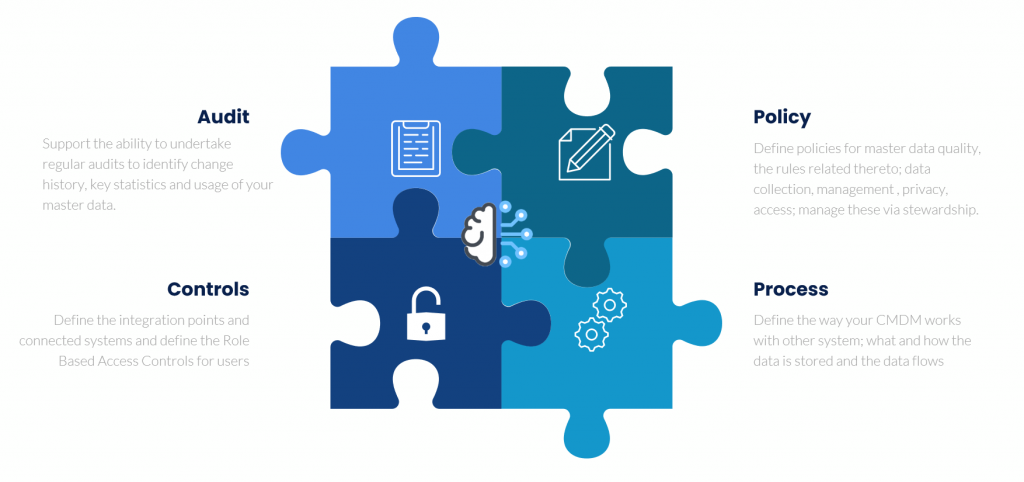
Active data governance is the practice of ensuring that business-supporting software applications’ behaviour and data management handling, conform to the business’ data governance policy and standards.
In the context of customer master data management, the behaviour, is the human and systems behaviour related specifically to the creation, management and distribution of customer master data.
Simplistically, this means that if a data governance policy dictates that all customers must of 18 years or older, then, an aspect of the applications capture of the customer record must include either a birth date, age or some indicator that the customer’s age has been verified as 18 years or older. The applications should also either enforce or inform when the data entered, does not align with the business rules.
Active data governance, therefore, means that the checks and balances associated with the data governance policies and standards need to be embedded in the data management process, thereby ensuring that the best possible data is captured and maintained in near real-time.
In sharp contrast, passive data governance is as is suggested, passive. Data quality issues, in particular, are identified after the master data has been created or changed and the actual status of the data is reconciled based on a comparison of the actual data with the data governance policies.
Passive data governance means that instead of fixing the process, rules, or systems that can cause errors, you live with the source of these issues and choose instead, to fix forward or simply report on the status of the data.
Pretectum’s CMDM tackles data governance in both ways according to the approach that you might choose.

